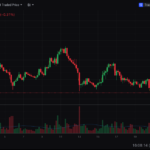Mean reversion is one of the most intriguing and widely used trading strategies in the financial markets. Rooted in the idea that prices tend to return to their historical averages, this strategy capitalizes on identifying and trading assets that are overbought or oversold. For traders who thrive on volatility and precision, mean reversion can offer a compelling edge.
What Is Mean Reversion?
At its core, mean reversion operates on the principle that extreme deviations in price often correct themselves over time. An asset’s price may spike due to market euphoria or plunge during a sell-off, but these moves often revert to a long-term average, such as a moving average or another statistical mean.
Key tools to identify mean reversion opportunities include:
- Moving Averages: Simple, exponential, or weighted moving averages to find price deviations.
- Relative Strength Index (RSI): Indicates overbought or oversold conditions.
- Bollinger Bands: Visualize price levels relative to historical volatility.
- Standard Deviation Channels: Highlight extreme moves away from the average.
How Does It Work?
- Identify the Mean: Determine the asset’s historical average price over a defined period using tools like moving averages or Bollinger Bands.
- Spot Extremes: Look for significant price deviations above or below this average.
- Trigger Entry: Enter a position when the price is significantly overbought (sell/short) or oversold (buy/long) based on technical indicators.
- Profit on Reversion: Exit when the price returns to or crosses the mean.
Practical Example
Suppose a stock is trading at $120, significantly above its 50-day moving average of $100. Indicators like RSI and Bollinger Bands confirm overbought conditions. A mean reversion strategy would involve shorting the stock, aiming for a return closer to $100, where you would take profit.
Advantages of Mean Reversion
- Consistency: Capitalizes on natural price movements and volatility.
- Defined Risk-Reward: Entry and exit points are based on clear statistical measures.
- Works Across Markets: Effective in equities, forex, commodities, and even cryptocurrencies.
Challenges and Risks
Prolonged Trends: Markets sometimes trend longer than expected, defying reversion assumptions.
- False Signals: Overbought or oversold indicators can sometimes fail.
- Market Context: External events like news or economic reports can override mean reversion patterns.
Tips for Successful Mean Reversion Trading
- Combine Indicators: Use multiple technical tools for confirmation.
- Set Tight Stops: Always protect against extreme moves that don’t revert.
- Trade Liquid Assets: Focus on assets with high trading volume to avoid slippage.
- Understand Context: Factor in broader market trends or news that could disrupt normal price behavior.
Who Should Use Mean Reversion?
This strategy suits disciplined traders who prefer calculated risk-taking and thrive in volatile markets. It’s ideal for short-term traders or swing traders looking to capitalize on quick price corrections.
Conclusion
Mean reversion trading is a powerful strategy for those who can identify and act on market extremes. While it requires sharp analytical skills and a disciplined approach, it offers consistent opportunities to profit from the market’s tendency to return to equilibrium. However, as with any strategy, success depends on diligent research, effective risk management, and adaptability to changing market conditions.
Disclaimer: This article is for informational purposes only and does not constitute financial or investment advice. Always conduct your own research or consult with a professional before trading.







